Fine-leaved marigolds: varieties, cultivation features
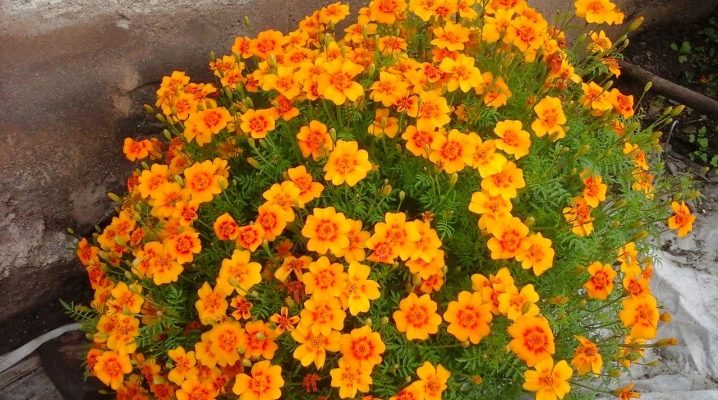
The most popular flower culture among gardeners can be considered marigolds. They are unpretentious in care, after planting seedlings in a flower bed, they begin to bloom almost immediately. They are used not only in the landscape design of the personal plot, but also for decorating flower beds in parks and alleys. Also used as a medicinal component in folk medicine and even in the preparation of some dishes.
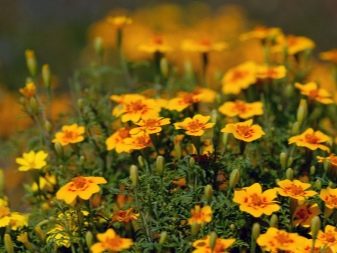
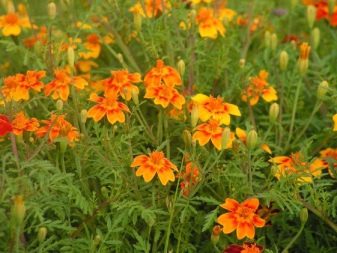
Description
Marigolds fine-leaved (Mexican) are completely unlike such popular species as erect or rejected. They are more suitable as planting material for open ground in the Russian climate. Mexican Tagetes appeared quite recently, but many gardeners have already fallen in love with it.
Not everyone likes the smell of the usual marigolds, but the smell of this variety of flowers contains subtle notes of lemon.
Lovers of a subtle and refined aroma of Mexican marigolds will be to their liking.
The leaves of the plant are very thin, their length does not exceed 8 cm, and their width is 3 cm. From the outside it seems as if they were knitted by a master from fine openwork yarn. And the flowers themselves, "scattered" around the flower garden, are more like fireworks. The stems of the plant begin to branch out at the base. Growing, the bush takes on a spherical shape. Therefore, you will not have to work for a long time on the design of the flower bed. Plant height does not exceed 30 cm.

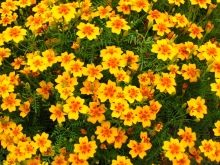

Varieties
There are many varieties of Mexican marigold. But the most famous are considered some of them.
- Tagetes "Golden gem" grows better in greenhouse conditions. Seeds are sown in mid-March or early April. In flower beds, planting is carried out from May to June, as soon as the night frosts stop. They are planted mainly in a sunny place. Golden yellow flowers will adorn any flower beds, flower beds and flower beds.
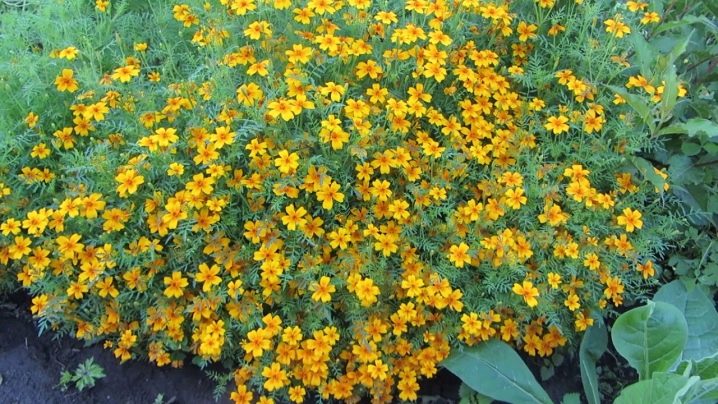
- Marigolds "Lulu" do not exceed 30 cm, when flowering, they quickly turn into a magnificent spherical bush. The flowers are small, with petals in one row, reaching 3 mm in diameter. There are so many buds on the bush that the entire flower garden is covered with them. Marigolds are predominantly dark yellow. It blooms until September, but at a temperature of + 1 ° C, it begins to fade.
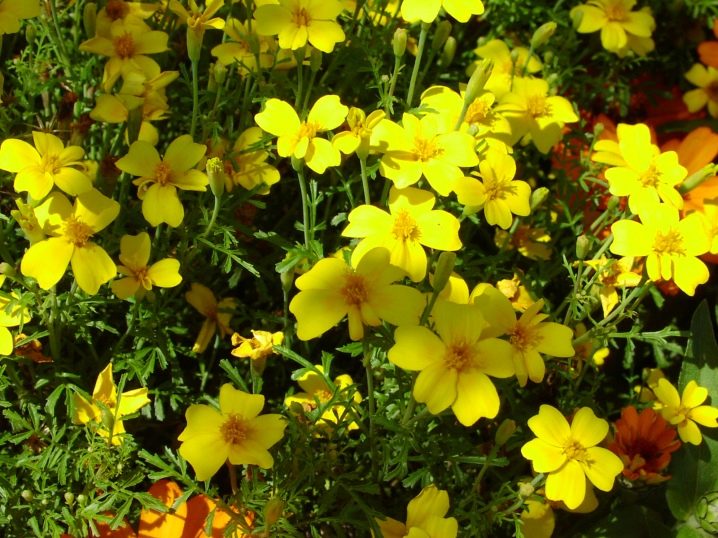
- Marigold variety "Paprika" when flowering forms a spherical bush. The middle of the flower is bright yellow, towards the edges it acquires a reddish-brown tint. Peduncles reach 3 cm in diameter. Fertile soil is the best environment for them. They can grow in partial shade, but it is advisable to provide them with sufficient sunlight. If you plant seeds directly in the ground, flowers sprout for 5 days. They will be an excellent decoration for loggias and balconies.
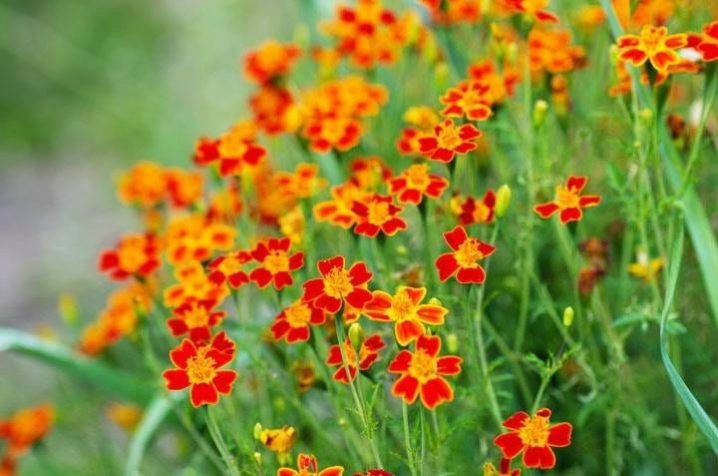
- Tagetes bush "Red gem" has thin but branched stems. Their height reaches 25-30 cm. The leaves of the plant are dark green. As the name implies, the petals of the flower have a red tint. Sunny areas with fertile soil are the best place for marigolds. In March, seeds are sown, which germinate in a week at a temperature of + 18 ° C.
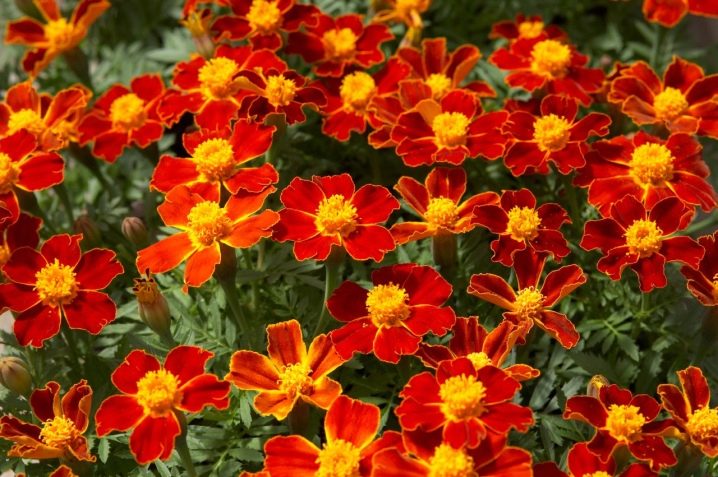
- Marigolds "Starfire mix" pleases the eye with abundant flowering. The diameter of the peduncles does not exceed 2 cm. The stems are highly branched, up to 30 cm long, forming a spherical bush covered with miniature flowers. Seedlings after planting appear within a week or two. They are planted from May to June. The distance between the bushes should be 30 cm.
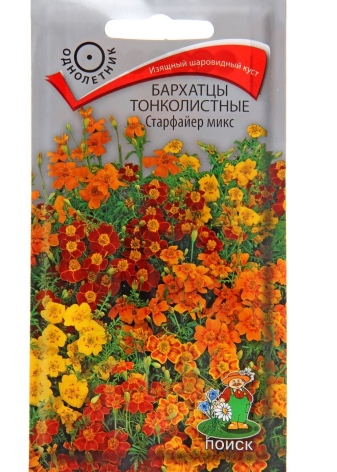
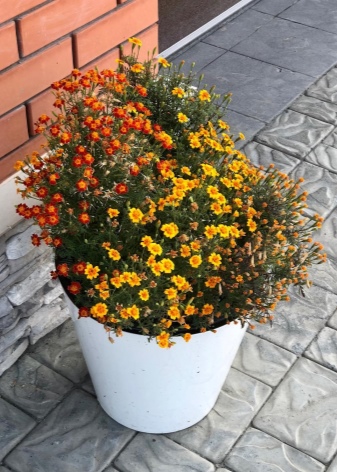
- Variety "Lemon gem" amazes florists with abundant flowering. This plant is undersized - the height does not exceed 30 cm. Inflorescences with a diameter of 2 cm are bright yellow. It begins to bloom in July; in September, when the temperature drops, wilting begins. Seeds are planted in March or April to obtain seedlings. Seedlings can appear up to 15 days. Planting in open ground is done as soon as the frost has passed.
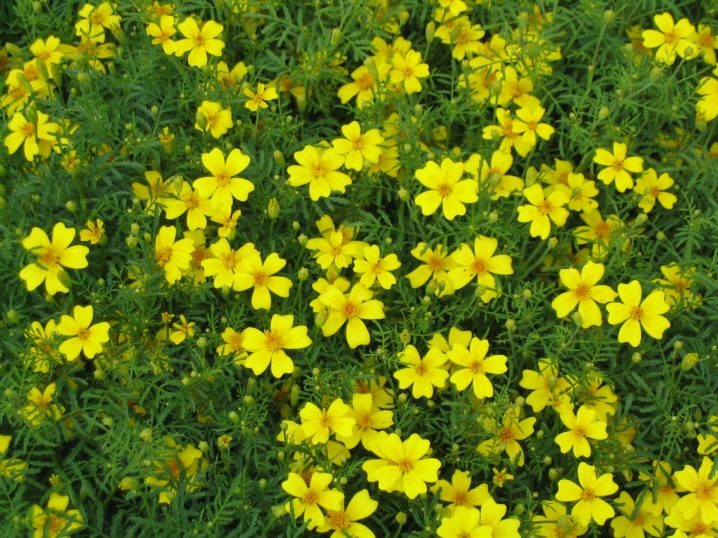
- Tagetes "Ursula" during flowering it turns into a golden yellow ball. At the same time, the flowers reach 3 cm. They are sown at the beginning of April, and already at the beginning of May they can be planted in a permanent place. Seedlings should be expected in a week.


- Marigolds "Karina orange" form a large bright orange ball. To obtain seedlings, they are sown in early April, but in open ground they are planted in June. The variety prefers fertile, sunny areas. Often gardeners make beds next to vegetable crops, using marigolds to protect them from fungal diseases and insects.
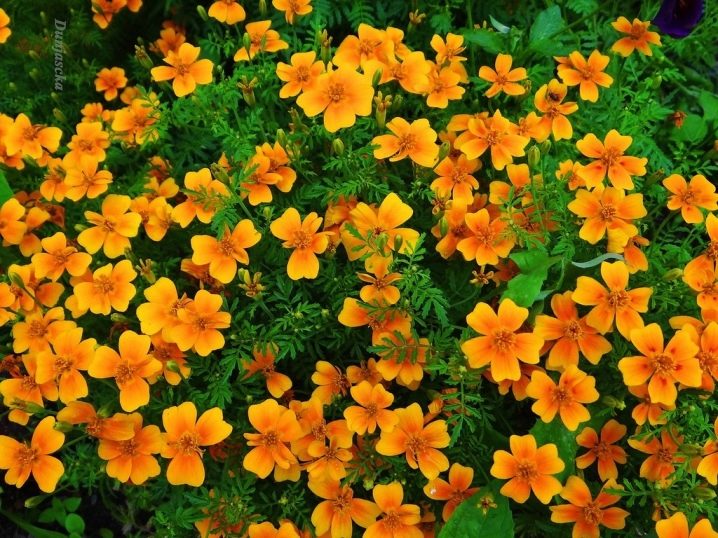
Reproduction
It is enough to buy marigolds once, grow them, collect seeds from them, and you can no longer spend money on buying new ones. For this, the head is cut off at the base of the flower and then dried. After drying, the seed is packaged in sachets.
Plants are planted in lighted areas, despite the fact that flowers can grow in partial shade. They take root well in any soil, but when planting in the ground, you should make sure that the frost period has passed.
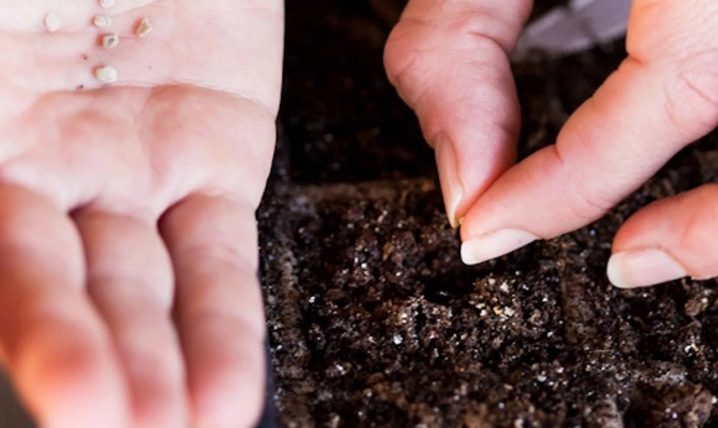
Seeds
Planting material is sown towards the end of May, when night frosts do not threaten the normal growth of flowers. If you use a special shelter, then sowing can be done 2 weeks earlier.
Soil requirements:
- neutral or slightly acidic;
- loose and fertile;
- loamy or sandy.
To begin with, grooves or holes with a depth of 3-5 cm are made in the garden bed. Then, kept in wet gauze for up to 3 hours, the seeds are sown and covered with a layer of soil.

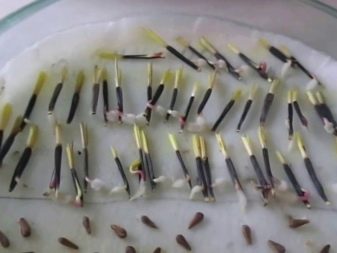
Seedlings
Growing seedlings from seeds is another matter. In order for marigolds to bloom earlier, it is necessary to plant flowers in April. To do this, you need to buy soil. But you can prepare it yourself. To do this, take in equal parts:
- humus;
- river sand;
- peat;
- sod land.
Gravel or expanded clay is poured into the cups to the bottom - it will act as a drain. The next step is to fill the containers with the finished substrate. Seeds are planted in holes 2 cm deep and covered with soil no higher than 1 cm. For fast germination of flowers, you need to provide them with a temperature of up to + 24 ° C and good lighting. Under favorable conditions, seedlings can be seen already on the 3rd day.
After the emergence of seedlings, plant care consists in moderate watering. Do not worry if, at the time of planting seedlings in the ground, the marigolds are already blooming. Nothing wrong with that.
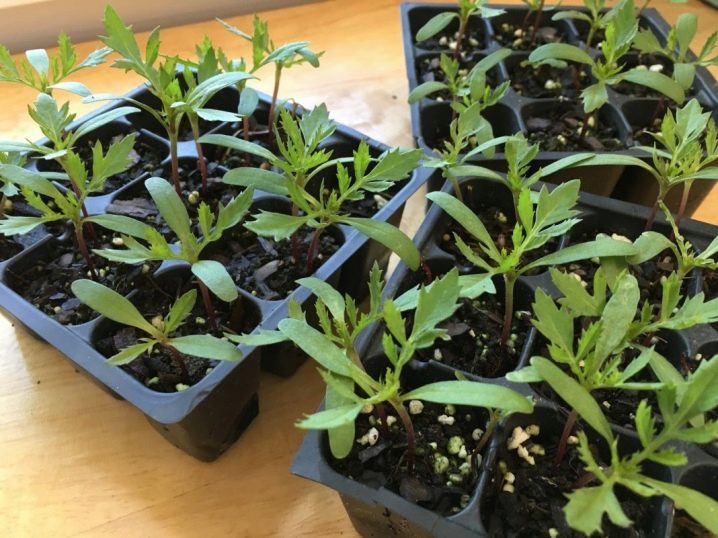
Care advice
In the first half of summer, marigolds need constant watering, otherwise you can get a frail plant with small inflorescences. It was during this period that the flowers increase their green mass and flower stalks form in them.
Do not forget to periodically feed Tagetes with mineral fertilizers, and also from time to time to loosen the soil to saturate the roots with oxygen.
It should be remembered that if you overdo it with top dressing, all the forces of the plant will go to building up the green mass - in this case, flowering may not occur. Also, do not allow weeds to overgrow the flower garden.

Nuances to remember when caring for marigolds:
- if marigolds were planted too densely in the garden, they should be thinned out occasionally;
- when planting seedlings in the ground, it is necessary to maintain a distance between flowers up to 30 cm;
- it is better to choose a sunny area for Tagetes, since it is more demanding on light;
- if you grow seedlings in a greenhouse or greenhouse, then it will be more persistent and strong.
You should be aware that when the air temperature drops below + 10 ° C, the growth of marigolds stops and the leaves become reddish.
Diseases and pests
An adult plant has a scent that repels many insects, which is why marigolds are used for pest control. But they themselves are sometimes susceptible to infection with various diseases and attacks of insect pests. This is often due to improper maintenance or adverse weather conditions.
Blackleg
Over-watering can lead to blackleg infestation. Young seedlings are susceptible to this disease. Diseased plants should be disposed of immediately, preferably by burning. In no case should you throw them out on the site in order to avoid contamination of the soil. Before sowing, preventive measures are taken to help rid the plant of the disease. For this, seeds and soil are treated with fungicides.
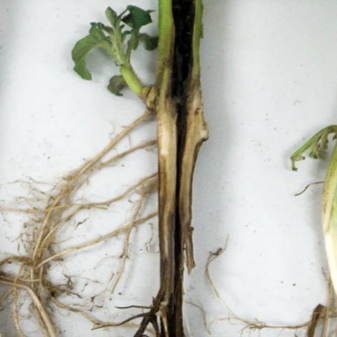

Root rot
If you plant marigolds in open ground during a period of high humidity, then there is a high probability of root rot. Flowers begin to turn yellow and wither, their growth stops. A plant affected by root rot cannot be saved. To avoid disease, you should constantly loosen the soil. Watering is needed regularly, but not too plentiful. Do not plant marigolds too densely and constantly remove weeds.
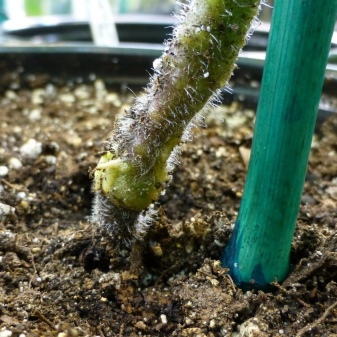

Viral infection of plants
The leaves of flowers are deformed, black spots appear on them, which gradually grow, the flowers take on an unsightly appearance, the seeds are not palpable - these are signs of a viral disease. As soon as the first symptoms appear, the bushes must be pulled out by the roots and burned... It is impossible to cure the affected marigolds.
A healthy adult plant is usually bypassed by insects. But if the conditions for growing marigolds are violated, pests may appear that can destroy them.
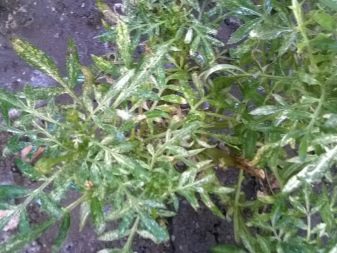
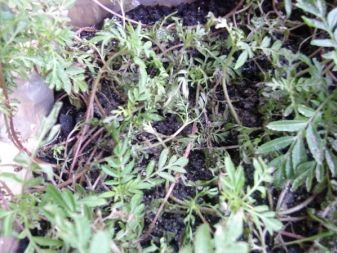
Insect pests that are especially dangerous for flower crops.
Aphid
It rarely appears on marigolds, but if the plant is affected, it chooses the upper shoots and buds. Flowers do not start to hurt right away. But the more the aphid colony spreads along its stems and the longer it feeds on its juices, the faster the marigolds lose their attractiveness and die. In the fight against the parasite, chemicals are effective.
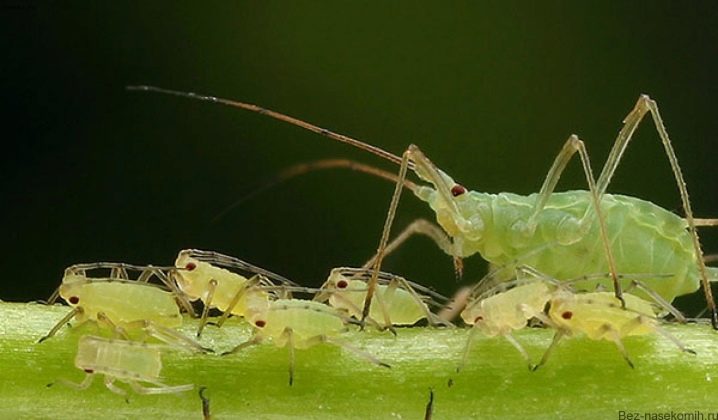
Spider mite
As soon as a light bloom appears on the foliage, you need to start fighting the spider mite. Most often, young, immature seedlings get sick. If the summer is dry and hot, then a completely healthy bush can be infected with insects. You can get rid of spider mites using soapy water and tobacco.
Also, the spider mite does not tolerate moisture, so you need to spray the flowers periodically.

Slugs
They begin to eat the fleshy stems and leaves of marigolds. As soon as constrictions and holes appear on the foliage, this is the first sign of the appearance of parasites. Pests are activated at night, so it is not possible to detect them immediately. A solution of mustard or wood ash is used against slugs and snails.
If you carry out prevention, as well as destroy parasites and treat marigolds for diseases, then they will get stronger faster and will bloom until frost.

For the nuances of growing thin-leaved marigolds, see below.







































































































The comment was sent successfully.